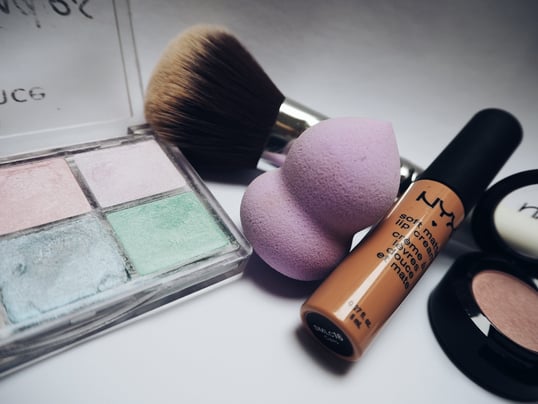When shopping for cosmetics, today’s customers look for a brand that appeals to a wide audience rather than just the stereotypical makeup-loving girl. Customers demand a brand that fulfils their needs by restocking well-loved products and placing emerging products on shelves. In this article we talk through how your brand can rise to the occasion and meet these needs to merchandise your products at Ulta, Sephora, and CVS in distinctive and effective ways.
Ulta
While on-the-go shoppers want accessible products they can grab on their way to the register in last-minute splurge bins, some shoppers prefer to peruse the aisles and look for a wider variety of products before making their selections. Keep your larger collection of classics on a shelf farther back in an Ulta store so long-time fans of the product will know where to look.
Because Ulta is often known as the cosmetics variety store, they market a wide array of products and naturally draw a wide audience. Ulta’s marketing strategy attracts an extremely diverse following and your cosmetics brand can chanel this to boost your success. Keep your Ulta shelves stocked with products at different price points to ensure that your brand remains a viable solution for a wide range of customers.
The photo above, from beauty blog JK Style, depicts one of the Ulta displays for the popular cosmetics brand NYX. In this display, NYX products fill an entire row of shelves with everything from lip color, to handbags, to concealer. Thanks to the numerous options of products to choose from, everyone can find something at Ulta in terms of both price and style selection.
This type of display would not be as successful in Sephora or CVS. Although variety is necessary in Ulta, in CVS the size of the spread would overwhelm the store, and higher cost goods would not fit in with the rest of the mix. In Sephora, the wide assortment of products would negate the push for exclusive and limited-edition products.
Takeaway: At Ulta, display products for every budget and commitment level.
CVS
As you market your products in the drugstore setting, focus your attention on products with pricing on the lower end of the spectrum. Even if your cosmetics company generally markets to a more upscale audience, pulling products from your line that you can market as “budget” items in drugstores will attract a new group of customers to your brand.
Further catch the eye of the on-the-go shopper by choosing packaging that clearly states the functional purpose of your product in an obvious place. Customers shopping at CVS won’t spend time sampling and trying on products, so they need to the ability to make the call just by looking at your bottle or box. This reliance on packaging means that labels must clearly demonstrate how a brand can suit different types of consumers (i.e range of skin tones, anti-aging, acne-fighting, waterproof, etc.).
Blogger BeingMelody’s photo shows NYX’s spread on the end of an aisle in CVS. Drastically different from the Ulta example, this CVS display has several options for select product types, but takes up about one-fourth of the space as the Ulta version.
Advertising on a display of this size alone can be tricky. Spread the word by getting product coupons on the back of CVS receipts. This reminder will put your brand (and logo) into customers’ minds, reminding CVS regulars to stock up on their favorite product.
Receipt advertising is more effective at CVS than at cosmetics-exclusive retailers because people who frequent a particular drugstore likely go there to pick up everything from a snack to their medical prescriptions to a birthday card, so even if they just made a CVS run yesterday, there’s no reason that they wouldn’t decide to go back tomorrow to get something completely different.
Takeaway: Use descriptive packaging and receipt advertising to stay on target with drugstore convenience
Sephora
Diversity of the products available ranks as one of the highest priorities for Sephora customers. When you’re merchandising in an environment as tailored to beauty gurus as Sephora is, display your entire collection for the makeup connoisseurs who think they’ve already seen it all.
When shopping at Sephora, customers want a variety of new and practical high quality products. Sephora customers like the “hunt” for their new favorite items, and they like exclusive products that can put their makeup in the spotlight. Releasing limited-time only promotions makes sense at Sephora; customers tend to treat exclusive products like a game. If your brand can create something buzz-worthy that is only available for a short amount of time, your consumers (especially those active on social media) will do the heavy lifting and spread the word to hype up the product.
With a mirror built directly into the display and segmented areas devoted to NYX pro tricks and NYX fan faves, this spread encourages shoppers to interact with the products in true Sephora fashion.
This division of products into pro-status and consumer-backed favorites helps NYX to bring in customers with both types of goals: tracking trends and stocking up on the basics. This type of display radiates the Sephora message and would not be effective in any other setting due to the lack of pricing variety and the focus on “limited time only” availability.
Takeaway: Use the Sephora business model of exclusive products and interactive displays to your advantage.
Not all cosmetics destinations are created equally, but your brand can maximize merchandising in each one by playing up the strengths of your product in different ways at each location.




